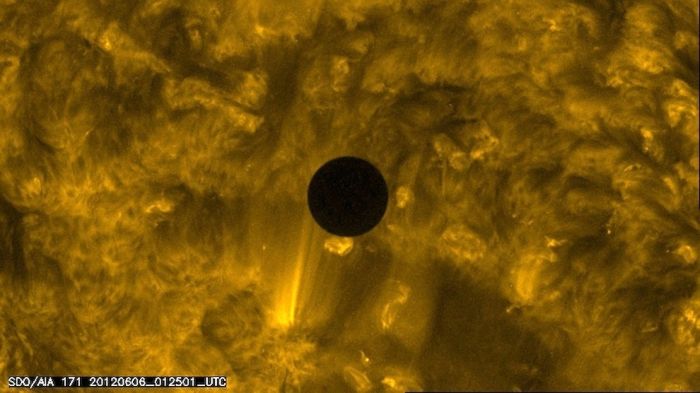|
|
Transit Of Venus Across The Sun
|
- The Hubble Space Telescope used the Moon as a mirror to study the light that bounces off Venus to determine the makeup of its atmosphere. This will be a technique that astronomers could also use to study exoplanets.
Past and future transits
Currently, transits occur only in June or December and the occurrence of these events slowly drifts becoming later in the year by about two days every 243-year cycle. Transits usually occur in pairs, on nearly the same date eight years apart. This is because the length of eight Earth years is almost the same as 13 years on Venus, so every eight years the planets are in roughly the same relative positions. This approximate conjunction usually results in a pair of transits, but it is not precise enough to produce a triplet, since Venus arrives 22 hours earlier each time. The last transit not to be part of a pair was in 1396. The next will be in 3089; in 2854 (the second of the 2846/2854 pair), although Venus will just miss the Sun as seen from the Earth's equator, a partial transit will be visible from some parts of the southern hemisphere.
|
|









